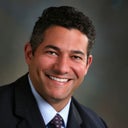I have a VP (Ventriculoperitoneal) shunt because of Hydrocephalus, but I want a Tummy Tuck because I have diastasis recti.My stomach is hard & big and makes me look pregnant. I have had two pregnancies and ended up having c-sections (one horizontally and the other vertically). I had my tubes tied last yr and no matter what I do my stomach won't go down.I am in my early 20's, 5'3", 125lbs, 35 in. waist. I just wanted to know if it's possible to have a TT considering my condition? & my blood pressure is sometimes high.
Answers (7)
From board-certified doctors and trusted medical professionals
Dr. J. Timothy Katzen, MD, FACS

Dr. J. Timothy Katzen, MD, FACS
Board Certified Plastic Surgeon
Answer
Dr. John LoMonaco, MD, FACS

Dr. John LoMonaco, MD, FACS
Board Certified Plastic Surgeon
Answer
Dr. Jeffrey E. Schreiber, MD, FACS

Dr. Jeffrey E. Schreiber, MD, FACS
Board Certified Plastic Surgeon
Answer
Dr. C. Bob Basu, MD, MPH, FACS
Dr. C. Bob Basu, MD, MPH, FACS
Board Certified Plastic Surgeon
Answer
Dr. John P. Stratis, MD
Dr. John P. Stratis, MD
Board Certified Plastic Surgeon
Answer
Dr. Peter A. Aldea, MD
Dr. Peter A. Aldea, MD
Board Certified Plastic Surgeon
Answer
Dr. Richard P. Rand, MD, FACS (retired)
Dr. Richard P. Rand, MD, FACS (retired)
Board Certified Plastic Surgeon
Answer
More Tummy Tuck Questions
See all Tummy Tuck Q&AWE SEND PRETTY
EMAILS
What’s trending? Who’s turning heads? Which TikTok myths need busting? We’ve got you. No fluff, no gatekeeping—just real talk. Get our free, unfiltered newsletter.